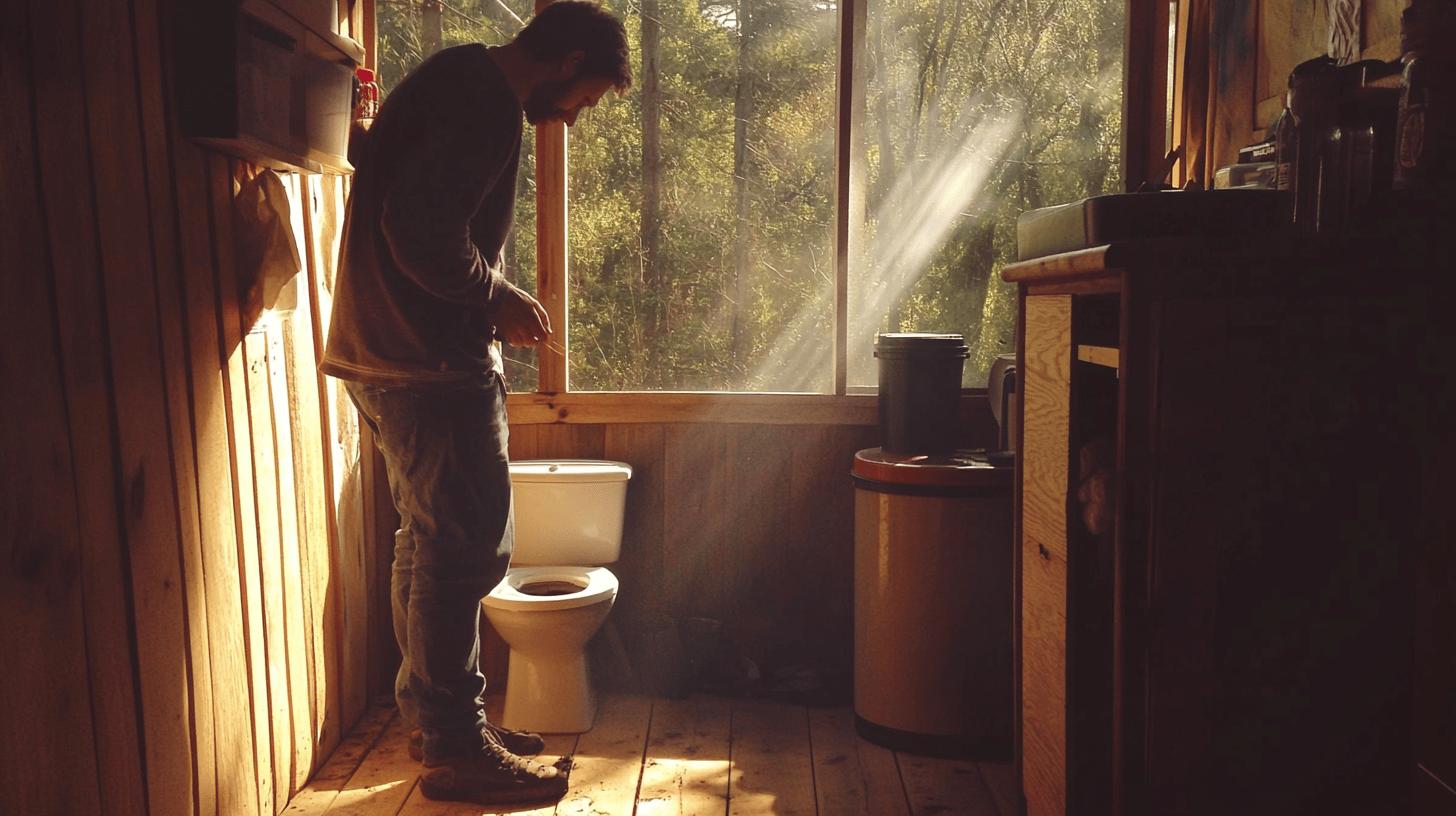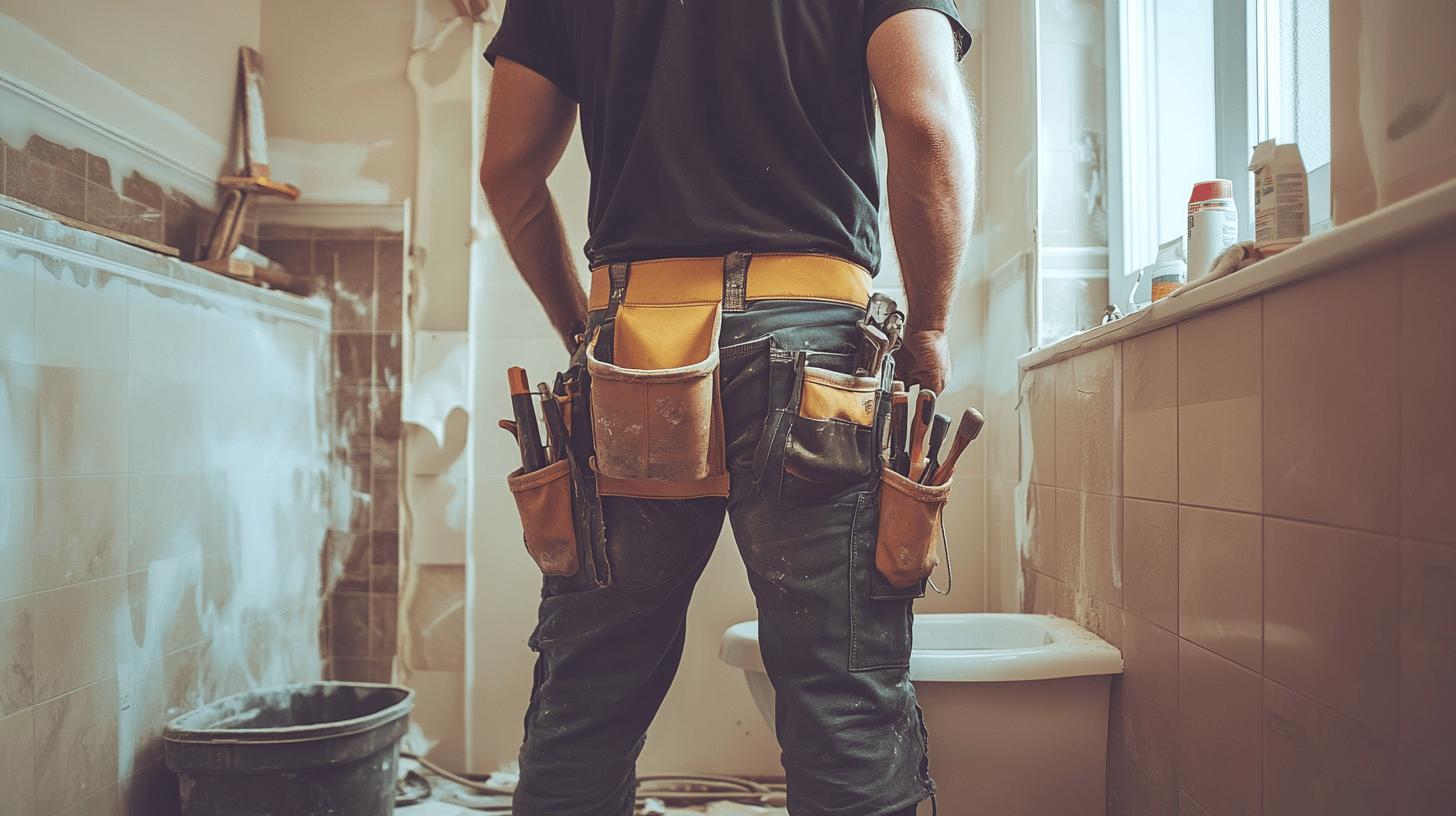TL;DR:
-
Toilet installation without plumbing is possible using alternatives.
-
Types of toilets include:
- Composting toilets: $600 – $2,000; requires regular emptying.
- Incinerating toilets: $1,000 – $4,000; needs electricity/gas and ash removal.
- Portable macerating toilets: costs vary; requires minimal maintenance and easy relocation.
-
Traditional installation is costly and labor-intensive, involving septic systems or extensive plumbing modifications.
-
Hiring professionals is recommended for compliance and safety, while DIY may risk improper installation and fines.
-
Maintenance for alternative toilets should be factored into total costs, including operational expenses for incinerating toilets.
Can you put a toilet in a place without plumbing? You might be surprised by the answer. Even though most toilets need a lot of plumbing, there are other options you might not think about. If you’re looking for eco-friendly choices or need a toilet in a remote area, plumbing-free toilets like composting or incinerating systems can be great solutions. In this article, we’ll explore how these work, why it’s important to know the local rules, and what to think about before installing a plumbing-free toilet.
Feasibility of Installing a Toilet Without Existing Plumbing
Can you install a toilet without plumbing? Absolutely! There are some great alternative solutions. Composting toilets break down waste naturally without using water, making them perfect for off-grid locations. Incinerating toilets burn waste down to ash and need electricity or gas, plus good ventilation. Both are eco-friendly and don’t require a lot of plumbing.
Another option is portable macerating toilets. They’re easy to move and can be set up with minimal effort. While they’re not a permanent fix, they work well until traditional plumbing is available.
Before you pick a plumbing-free toilet, it’s important to check local regulations and get the necessary permits. These rules can vary and are in place to keep things safe and sanitary. Some areas may limit certain types of toilets, especially those that deal with waste disposal like incinerating ones. Getting permits might involve showing how the system impacts the environment and how efficient it is. Talking to local authorities early can help you avoid legal issues and ensure the system you choose fits your location.
-
Composting toilets
-
Incinerating toilets
-
Portable macerating toilets
- Non-plumbed toilets
Exploring Alternative Toilet Solutions

Can you install a toilet without plumbing? Yes, you can! Composting toilets are a great option. They break down waste using natural biological processes without needing water, making them perfect for off-grid or eco-friendly situations. They typically cost between $600 and $2,000, depending on their features and capacity. Just remember, you’ll need to empty the compost regularly to keep things hygienic and running smoothly.
What about incinerating toilets? These systems burn waste down to ash and require electricity or gas, along with proper ventilation. They can cost anywhere from $1,000 to $4,000 because of their complexity and installation needs. The main maintenance task is ash removal, and good ventilation is essential for safety and following regulations.
Are portable macerating toilets a good choice? Definitely! They’re flexible and super easy to install. These toilets grind up waste and pump it away, so you don’t need traditional plumbing. They’re also portable, making them great for temporary setups. Installation is a breeze, needing just a few screws, and maintenance is simple too.
| Toilet Type | Cost Range | Maintenance Requirements |
|————-|————|—————————|
| Composting toilets | $600 – $2,000 | Regular compost emptying |
| Incinerating toilets | $1,000 – $4,000 | Ash removal; requires ventilation |
| Portable macerating toilets | Varies | Minimal; relocation and reinstallation |
Challenges of Traditional Toilet Installation Without Plumbing
Can you put in a traditional toilet without plumbing? Yes, but it’s tough. Traditional toilets need to connect to a septic or sewer system, which can involve a lot of work. You’ll often have to dig and install pipes, and this might not even be possible in some areas. Building plumbing in places that don’t have connections can require a lot of expertise and could disturb the environment.
So, what about the costs and labor? Connecting to a sewer line or installing a septic tank can set you back several thousand dollars. You’ll need professionals to ensure everything meets building codes and works properly. All the modifications and technical know-how needed can complicate the process and raise costs. Because of these challenges, it might be smarter and cheaper to look into non-plumbed or alternative solutions.
- High installation costs
-
Labor-intensive processes
-
Potential need for septic tank
- Extensive plumbing modifications
Professional Installation vs. DIY Approaches

Should you hire a professional plumber for the installation? Yes, it’s a smart move. Professional plumbers make sure everything meets building codes, which is important for safety and legality. They also provide insurance and guarantees for their work, giving you peace of mind. Plus, they can spot potential problems early on, helping you avoid costly repairs down the line. Their expertise helps tackle unexpected issues, ensuring a smooth installation.
What about doing it yourself? While it might save you some cash at first, it can come with risks. If you don’t have much experience, you could end up with improper installation, leaks, or violations of regulations. Mistakes can damage your home or lead to fines. Without professional guidance, fixing future plumbing problems can get tricky. Even though DIY might seem cheaper, hiring a pro often ends up being safer and more cost-effective in the long run.
-
Compliance with building codes
-
Insurance and guarantee of work
-
Professional expertise
- Potential cost savings with DIY
Cost and Maintenance Considerations for Alternative Toilets
What are the costs of alternative toilets? Composting toilets typically range from $600 to $2,000, offering an eco-friendly option that doesn’t use water. Incinerating toilets, which burn waste to ash, cost between $1,000 and $4,000. Prices can vary based on technology and features, so keep these costs in mind when planning.
What about maintenance? Composting toilets require regular upkeep, like emptying the compost. Incinerating toilets need ash removal and proper ventilation to manage fumes safely. Maintenance is key for convenience and hygiene, so it’s important to factor this into your budget.
Don’t just think about the purchase price; consider the ongoing costs, especially for incinerating toilets that need electricity or gas. However, many homeowners find these systems appealing, especially those who are eco-conscious or living off the grid, due to potential savings on water bills.
-
Initial purchase cost
-
Regular maintenance
-
Operational costs (electricity or gas for incinerating toilets)
- Long-term savings on water bills
Final Words
Looking into installing a toilet without existing plumbing shows that there are practical options like composting and incinerating toilets. These eco-friendly solutions offer useful benefits but also come with maintenance needs and costs, plus you’ll have to follow local regulations and permits. Hiring professionals can ensure compliance and expertise, but skilled DIYers might save money by doing it themselves. In the end, whether you choose innovative alternatives or face the challenges of traditional setups, you can confidently plan a toilet installation without plumbing. Embracing these options helps you effectively enhance your space.
FAQ
Q: Can you install a toilet where there is no plumbing nearby?
A: Yes, you can install a toilet without existing plumbing using alternative solutions like composting, incinerating, or macerating toilets. These options require minimal infrastructure compared to traditional toilets.
Q: What is the best toilet option without plumbing?
A: The best option depends on your needs. Composting toilets are eco-friendly; incinerating toilets reduce waste to ash; portable macerating toilets offer mobility. Each has unique features to suit different situations.
Q: How does a toilet without plumbing work?
A: Toilets without plumbing work by using alternative waste management systems. Composting toilets rely on decomposition, incinerating toilets burn waste, and macerating toilets use grinders to manage waste efficiently.
Q: Is there a toilet that does not require plumbing?
A: Yes, composting, incinerating, and macerating toilets do not require traditional plumbing. They provide standalone waste management solutions suitable for off-grid or temporary setups.
Q: How to put in a toilet without plumbing?
A: To install a toilet without plumbing, select an appropriate model like composting or incinerating, ensure proper ventilation, and follow the manufacturer’s installation guidelines. Check local regulations for any permit requirements.
Q: Can a toilet be installed anywhere?
A: A toilet can be installed almost anywhere with the right alternative system. Consider ventilation and space requirements when choosing a location. Always check local regulations and permits needed for installation.

